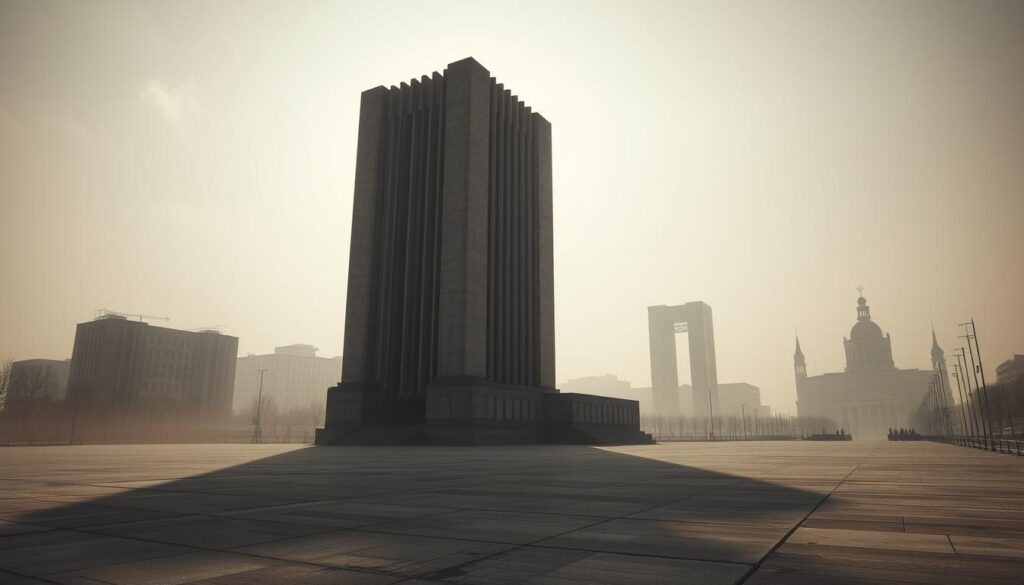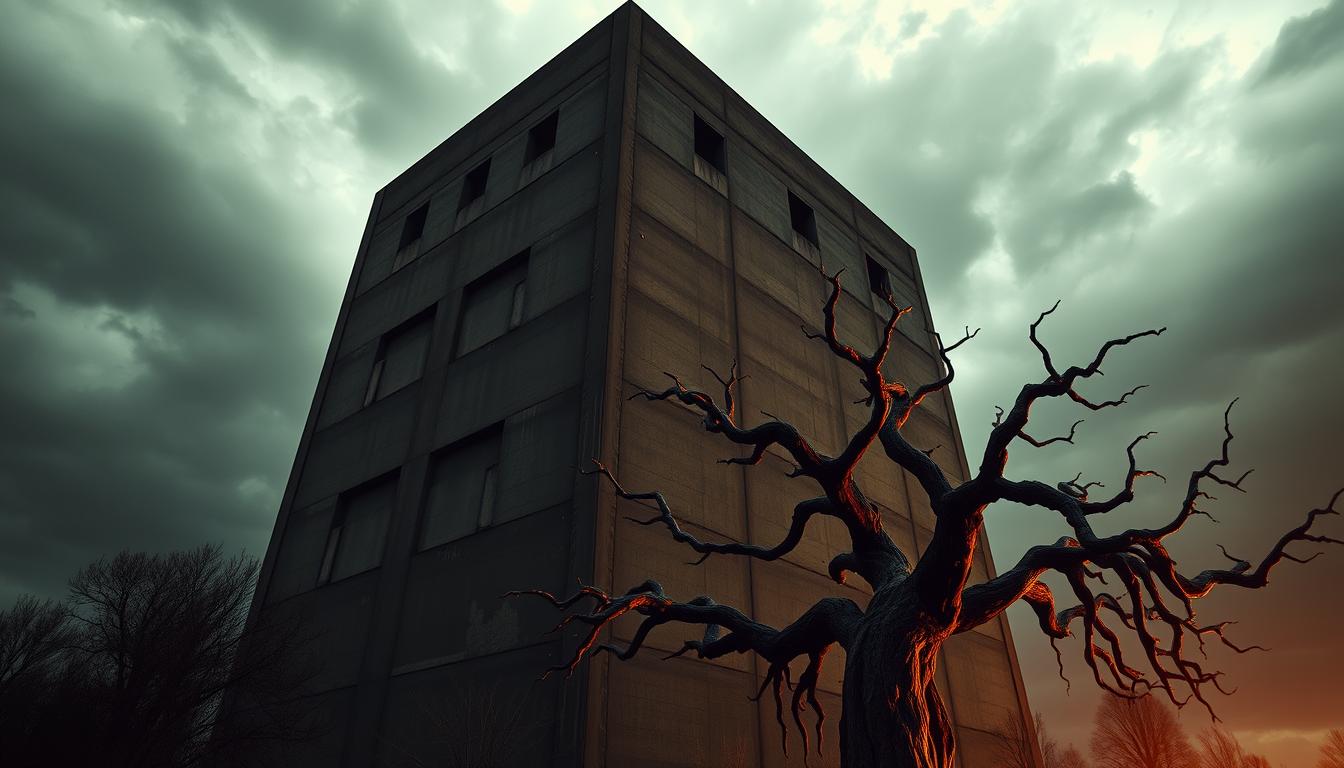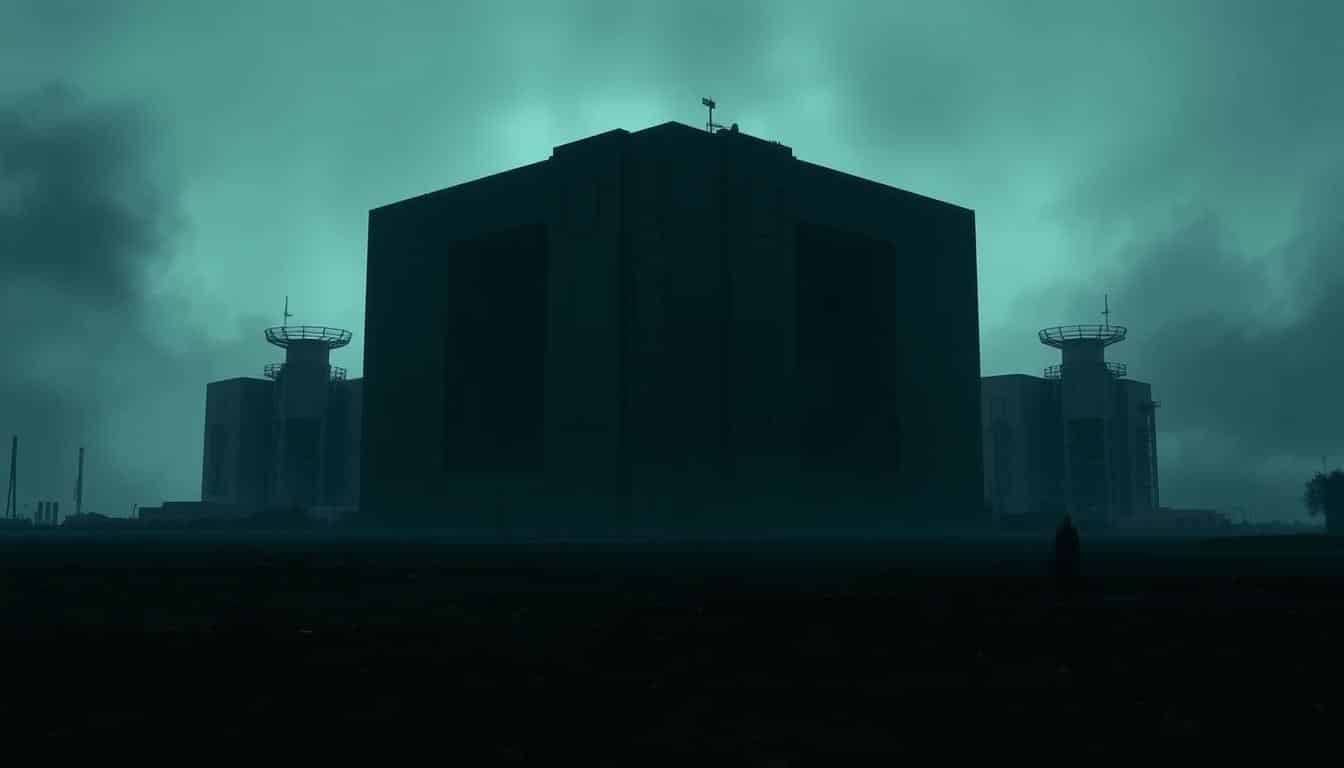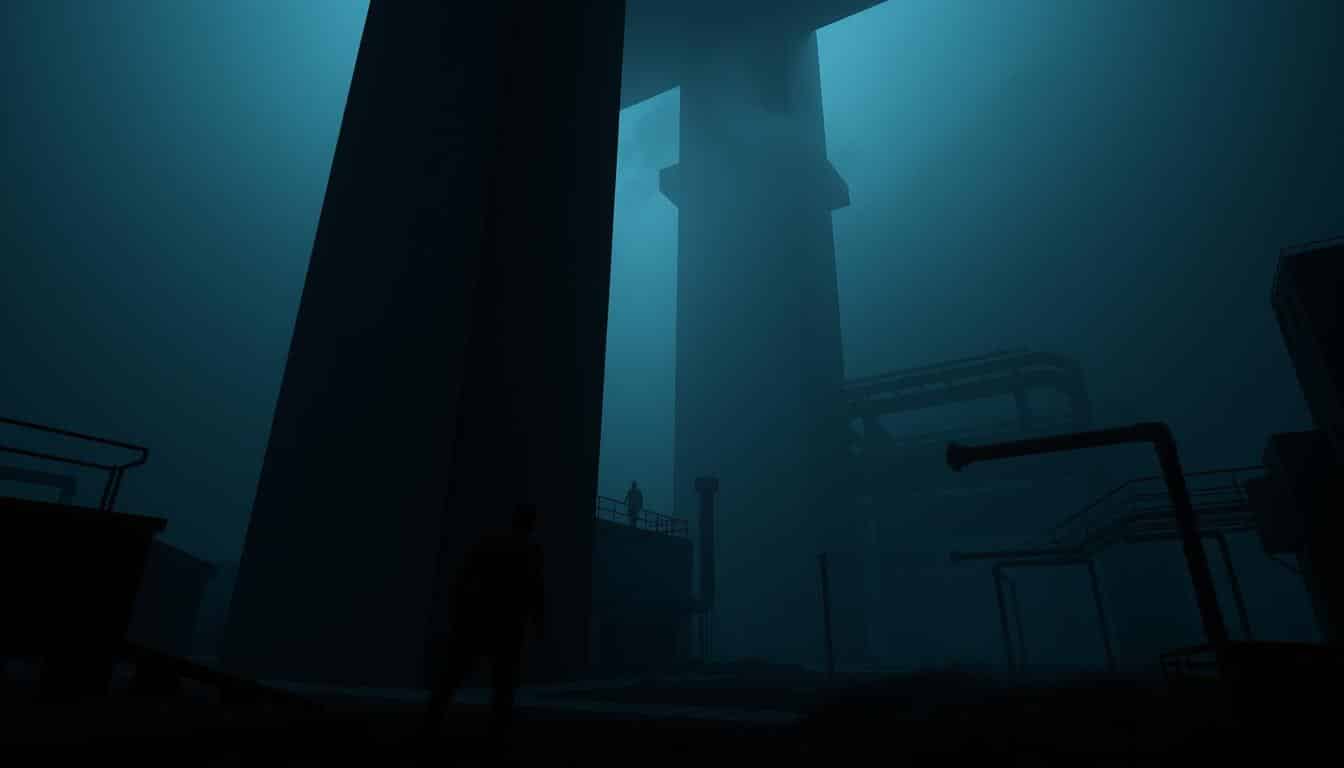The architecture of the Soviet Union shows the culture and ideas of its time. Soviet Brutalism stands out, known for its simple, powerful structures that make people feel strong yet uneasy. This article looks at how Soviet Brutalism and horror aesthetics connect, showing how these buildings tell dark stories and make us feel scared.
We explore where this style came from, its main features, and famous examples. We’ll see how it deeply affects our culture today and conversations about buildings and spaces.
The Origins of Soviet Brutalism
After World War II, nations were rebuilding. Soviet Brutalism rose during these challenging times. It aimed to quickly rebuild the Soviet Union’s cities. This style borrowed from British Brutalism. It was known for its raw concrete and big shapes.
This movement’s roots were in space-age Marxism. It wasn’t just about meeting housing needs. It also showed off socialist values through architecture. Buildings from this time symbolized unity and shared identity.
The Soviet Union’s post-war buildings aimed to shape a new urban culture. They mixed practical use with political ideals. These massive structures provided homes and showcased the state’s values. They tell a story of recovery and strength that still intrigues people today.

Key Features of Soviet Brutalist Architecture
Soviet Brutalist architecture shows ideals of its time through key features. The use of raw concrete is central to this style. It not only makes the buildings strong but also shows the goal of lasting and being practical.
The design is marked by big forms and geometric shapes. Architects focused on being efficient and making spaces for everyone to use together. This led to buildings that care more about serving a community than looking fancy.
This architecture symbolizes the nation’s hopes, showing a dream for a new, united society. Its bold look brings out many feelings. It connects the buildings to their history and the society around them.
Notable Examples of Soviet Brutalist Buildings
Soviet Brutalist architecture is known for its impressive designs. These buildings are iconic, showing their importance and role in society. The Bank of Georgia is a key example, with its complex design. It blends art with government needs beautifully.
The Kyiv Crematorium takes a different approach to death. Its design helps distract from the sadness of its purpose. This makes it stand out in Soviet Brutalism. These buildings show the deep ideas behind their designs and their roles.
The House of Nuclear Atomists mixes science with city style. It sparks conversations between art and use. The Chisinau Circus shows how these buildings also embrace culture. They become meaningful spaces in their communities.
Soviet Brutalist and Horror Aesthetics
Soviet Brutalist architecture is known for its horror vibes. It channels feelings of unease and dread. These big, bold buildings are often seen in stories about dark futures. They are ruled by harsh leaders. Their stark designs make people feel scared, turning public places into symbols of loneliness and control.
Dystopian Narratives in Architectural Form
Brutalist buildings tell stories of falling societies and harsh rule. The use of raw concrete and sharp shapes feels cold. This makes places that deepen feelings of being alone. The way they are built reflects themes in books and movies. They show a world without warmth or freedom.
The Psychological Impact of Brutalism
Studies show these buildings can really impact how we feel. People in Brutalist spaces may feel more anxious or small. The architecture’s big and bold look adds to the sense of fear in cities. It shows how buildings and our feelings are connected.
The Role of Ideology in Soviet Brutalism
Ideology was key in Soviet architecture, especially in Brutalism. This style was a strong tool for political messages. It showed the state’s values through big, bold structures. Utilitarian shapes highlighted community and shared goals, rooted in socialist beliefs.
These massive buildings showed the socialist state’s power and toughness. Every design detail was chosen to show progress and strength. The architecture matched the political mood, picturing a perfect future as part of the nation’s identity.
Architects worked under tight government control, mixing art with politics. This balance caused tension between personal creativity and official rules, echoing larger social issues. This struggle gave Soviet Brutalism its distinct look, mixing function with ideological messages.
The Intersection of Horror and Architecture
How buildings make us feel scared or uneasy is fascinating. The way they are designed can really affect our emotions. In modern art, there’s a lot of interest in how these feelings show up, especially with Brutalism. This style connects deeply with themes of fear and trauma in today’s world.
When architects and artists look at buildings, they see more than just the structure. Brutalist buildings, for example, stand out with their heavy and stark look. They make us think about the tough parts of life, making us feel a certain way when we see them. The mix of horror and architecture helps us dive deep into our feelings, showing us how important it is to explore these spaces.
Modern Perspectives: Documenting Brutalist Spaces
In recent years, views on Soviet Brutalism have changed a lot. Artists and photographers now focus on the human stories in Brutalist architecture. They show how these buildings are more than just their tough exterior, by highlighting the lives of the people living in them.
Photographic Projects Unveiling Human Stories
The project “Concrete Citizens” is a key example. It shows the daily lives of people in Soviet Brutalist buildings. It emphasizes the community’s warmth against the cold style of the buildings. These photos change how we see these structures, making them scenes of vibrant human stories.
Current Attitudes Towards Soviet Brutalist Structures
Today, people have mixed feelings about Soviet Brutalism. Some want to keep these buildings for their historical value. They see them as landmarks from a specific time. Others think we should replace them with more useful buildings. The challenge is to respect the past while meeting current needs.
Art Exhibitions Bridging Horror and Brutalism
Many art shows have looked at the link between horror and Soviet Brutalist architecture. These events reveal how simple modern designs can make us feel uneasy, similar to classic horror settings. “Horror in the Modernist Block” is one example, focusing on Brutalism’s features. It shows how art can mirror our fears and the dark histories of these big buildings.
Today’s artists use Soviet Brutalism to show loneliness and anxiety. They blend these buildings’ stark looks with horror themes. This mix opens a conversation on how such places make us feel. The mix of beauty and sadness in this art makes people see space and memory differently.
Conclusion
Exploring Soviet Brutalism with a horror lens reveals deep insights about its architecture and cultural effects. This story mixes ideals and feelings, making us see cities differently. These big, bold buildings show society’s complex side and remind us of our history.
Soviet Brutalism isn’t just about the buildings. It makes us think about how design affects our minds. By using horror elements, these structures start conversations about our strength and weaknesses in cities. They show the fine line between beauty and harshness, changing how we see our past and present.
In the end, Soviet Brutalism’s impact goes beyond architecture. It fosters talks on how we view and live in our environment. As we deal with its influences today, the relationship between cultural effects and architectural styles shapes our city lives.



